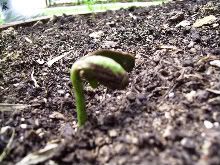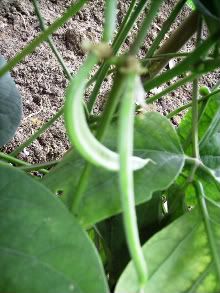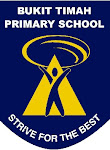"A cloud of sparks rained down, most of them missing the nest, but some ... hit the depression and of those six or seven found fuel and grew and cused the bark to take on a red glow."
Q5) In his attempt to make the fire, Brian selected four different items. How are these items similar?
Q6) Why was Brian able to light up the bark of the tree and not the twigs and grass he had used earlier?
How To Soar in PSLE - BTPS Way!!
Interact with complex questions / graphs / pictures to pick up valuable clues (don't highlight - just use your pen to underline words or scribble notes)
Start with Booklet A and do it meticulously with full focus - explore all 4 distractors before making final choice.
MANAGE your TIME - to score well, you need to try to finish ALL questions.
Specific answers = answers that are relevant to question.
When confused, choose any of the following strategies:
1. Ask, "What Science idea is being used in question?"
2. Pose other questions to clarify your thoughts
3. COMPARE to another set-up
4. COMPARE to a reverse situation
5. Connect to your knowledge in life (yes, you do have lots of prior / other knowledge)
6. Break down your answer in steps before crafting final answer.
Common problems with wrong answers:
*Answers are generic/vague and do not connect to that specific question
*Answers are not scientific and do not explain using Science ideas
*Answers do not make use of data provided when asked
*Answers did not make comparisons - use words like more/most etc..when asked
BTPS supports all P6 in achieving their PSLE GOALS!!
Start with Booklet A and do it meticulously with full focus - explore all 4 distractors before making final choice.
MANAGE your TIME - to score well, you need to try to finish ALL questions.
Specific answers = answers that are relevant to question.
When confused, choose any of the following strategies:
1. Ask, "What Science idea is being used in question?"
2. Pose other questions to clarify your thoughts
3. COMPARE to another set-up
4. COMPARE to a reverse situation
5. Connect to your knowledge in life (yes, you do have lots of prior / other knowledge)
6. Break down your answer in steps before crafting final answer.
Common problems with wrong answers:
*Answers are generic/vague and do not connect to that specific question
*Answers are not scientific and do not explain using Science ideas
*Answers do not make use of data provided when asked
*Answers did not make comparisons - use words like more/most etc..when asked
BTPS supports all P6 in achieving their PSLE GOALS!!
Thursday, May 28, 2009
Subscribe to:
Post Comments (Atom)
Science Around Me (SAM)
SAM is a Science journal that allows pupils to express themselves in their favourite ways about Science.
SAM is another great opportunity for pupils to THINK and TALK Science in a medium that is customised to their learning styles.
SAM allows teachers to informally assess understanding of the child and clarify misconceptions in their learning.
SAM is another great opportunity for pupils to THINK and TALK Science in a medium that is customised to their learning styles.
SAM allows teachers to informally assess understanding of the child and clarify misconceptions in their learning.
Factors Affecting the Environment by Gog Ru Yan - 6G

When Ice Changes into Water by Goh Chee Yan - 5G
Do you wonder whether the mass of ice changes when it melts into water. Try this out:
1. Put a few ice cubes into a plastic bag
2. Tie the mouth of the bag tightly
3. Weigh the bag of ice cubes (if there is condensation outside the bag, wipe it dry before weighing)
4. Place the bag in the sun
5. When ice has melted, wipe the outside of the bag dry (refer to step 3)
6. Weigh the bag
You will discover that the mass of the bag remains the same!
There is no change in mass when ice melts!!
1. Put a few ice cubes into a plastic bag
2. Tie the mouth of the bag tightly
3. Weigh the bag of ice cubes (if there is condensation outside the bag, wipe it dry before weighing)
4. Place the bag in the sun
5. When ice has melted, wipe the outside of the bag dry (refer to step 3)
6. Weigh the bag
You will discover that the mass of the bag remains the same!
There is no change in mass when ice melts!!
Simple Steps to fight Dengue by Elizabeth Wu 4C







23 comments:
Q5 )
They are flammable and/or dry .
Q6 )
THe twigs and grass he had used earlier were not fine ,soft abd fluffy enough . Furthermore , they do not have as much chemical pontential energy as the bark and hence were not light up as the bark did .
Gu Yuling 6C
Q5
They are all dry and can be lighted up into fire
Q6
They might have been wet and could not have been set on fire as fire cannot start on a wet surface
Joie Goh 6 Faith
Youn Yea Won Ellia(6C)
Q5)
- They are all flammable. Before Brian can get fire, he has to get a material which can catch fire right?
If he got something like broken glass or anything that cannot catch fire, do you think he can get fire? The answer is what you are thinking now, which is NO.
-They are dry. Wet materials such as wet barks are still flammable but they produce a lot of smoke. However, dry materials catch fire easily and they also do not produce much smokes. This can help him get a fire easily and faster.
As I did not really read the book that intensively, I do not know what this four items are.
But, after reading Yea Won's Post(How many times must I mention her name?), I can see that we want something flammable. In fact you can just burn about everything at its triple point. But normally that point is quite high for most solids. Thus with sparks we can burn them. Then, they all must be flammable.
For question six, a few reason as follows,
I.The surface area is very small, it must have a big area to be able to reach the sparks
II.Grass still has an oily surface, preventing it to burn(This type of oil prevents burning, not supports)
III.Than the bark has more CPE, making it a better option to be burn
IIII(Normally Romans wrot four like this but as we like it simple it is IV). Finally, the twig is thin, it will not work unless it fall on a point where the spark can use alot of CPE to start burning
5)the items he collected are all dry and came fom plants.
6)the twigs and grass he collected earlier were dry,but too hard.and they do not have as much chemical potential energy as the bark has.so they did not light up.
tan siqi(6G)
Q5)
They are flammable and probably conductors of heat.
Q6)
The bark has more Chemical Potential Energy, therefore ,it would light up unlike the twigs and grass.
Besides, grass is normally wet because of the morning dew and twigs are too hard for burning.
JJ (6C).
-They were all dry and could catch fire more easily which means they are flammable.
-The bark of the tree was dryer and harder than both the twigs and grass. As the bark is also rougher, there will be more friction when something was rubbed in contact with the bark.
-The bark also has more chemical potential energy and a bigger surface of area. Items with bigger surface areas catches fire more easily, as the fire can spread out more easily.
-Plus, twigs are too hard to use for burning.
Si Jia
6 grace
They are all flammable. If they are not flammable, how can the objects start or catch a fire?
The twigs and grass may not have enough surface area. SO it cannot light up. Twigs and grass could not have enough CPE to support burning.Not enough friction between.
MARCUS CHIOH
Q5. they were dry ,smalland is quite worthless.
Q6. maybe the twigs and grass is not as fine as the barks.the reason can also be that the twigs and grass is dry as they did not have the source of water but the bark could get the water from the roots that absorbs water to be transported to the whole tree.
~Syafiqah 6Grace
Q5)These items can be lit up easily.If he pick something that is hard to lit up he needed a longer time to lit it.
Q6)The twigs and grasses do not contain as much chemical energy as the bark hence the twigs and grasses did not lit up.
juan pang
Q5)
they are all easily to produce heat.
Q6)unlike the twigs and leaves, the bark has chemical potential energy.
Bronson Chua 6Joy Peace..
Bronson, I think the twigs and grass had CPE, its just that they do not have ENOUGH in order to be lit.
Actually, I was thinking, does things need to be dry in order to be burnt or catch fire???
THere is such thing as a fire fuel and it is liquid form. So does creating a fire need to be dry? After a while, I will try to explain more.
I checked the Internet, they said that GRAVITY had a part to play in fire. So maybe it was the height or something related that did not allow the twigs and grass to burn
MARCUS
Marcus,
I have learnt that dry things catch fire easier but wet things slower and harder. Dry things such as twigs and barks also generate a lot of fire compared to the wet ones.
In Korea, we cook ducks with wet barks because they generate a lot of smoke but a little fire.
/Youn Yea Won (6C)
Q5)
-They are flammable and flammable items can catch fire.
- They are dry. Dry items can catch fire easily, unlike wet items.
Q6)
The twigs and grass were too thin and does not have enough CPE to light up. The grass might also be too wet to light up. The bark is bigger and has more CPE to light up.
-Megan, 6Faith
q[5]They are similar as they both are dry
q[6]He was not able to make fire with the twigs and grass as they are not fine ,and has too little chemical potential energy to light up the fire
tobias lee 6hope
Indeed, it maybe harder to burn. But it can still be burnt. So being dry is not necessary for a fire to start. So I do not think dry is a condition for fire to burn.
Gravity has a part to play. So maybe it was because of gravity. MAYBE when he was lighting the twigs and grass, a wind blew by(although it sounds dumb). Maybe at that time, not enough oxygen. There are many factors affecting fire. SO some of the factos may be the reason that the twigs and grass could not light up.
MARCUS
1)They are all flammable
2)the other object has lots of friction but they wear tear before a fire could be started
Lim zhi xiang
6Grace
Q6)Bark is the outermost layers of stems and roots.The tree consist of inner bark and outer bark.The inner bark is a living tissue while the outer bark is the dead tissue of the stem.As it is dead,it also means that it is dry.The grass and the twigs he used earlier are still living which means that it is wet.This explains why the sparks were able to light up the dry bark but not the twig and grass.~audrey 6grace
This is what i think again...Let's say if all the items are equally dry.The twig and the grass are both thin and has a smaller exposed surface area while the bark has a larger surface area compared to the twig and the grass.Tap sparks onto all of them,the bark would be the first to be lighten up as more sparks would land on the surface then the twig and grass.~audrey 6grace
Q5)All the items were flammable and/or dry.
Q6)Items used were:$20 note, twigs, grass & bark. Reasons are as follows:
1.The twigs, grass and $20 note may have been wet.
2.The twigs, grass and $20 note did not have as much Chemical Potential Energy as the bark used.
3.Perhaps the grass and twidgs were too little or/and small.
~Nicholas King(6C)
all the items are flamable and the the twigs and grass may be too moist or thick unless you had a large ammount of fuel to start with and for sparks they need fine flamable stuff like string so the bark when is sliced throughly it would ignite easily
whoops the one above is from calvin of 6 Grace
Post a Comment